
21-12-2025 21:32
Pol DebaenstHello, Garden, Burgweg 19, Veurne, BelgiumOn 10/1

21-12-2025 21:40
Isabelle CharissouBonjour, j'aimerais connaitre les références de

21-12-2025 21:31
Pol DebaenstHello, Garden, Burgweg 19, Veurne, BelgiumOn 10/1

21-12-2025 21:31
Pol DebaenstHello, Garden, Burgweg 19, Veurne, BelgiumOn 10/1

20-12-2025 23:08
Patrice TANCHAUDBonsoir, récolte sur sol sablonneux dans l'arri�

21-12-2025 09:32
Hello.A tiny ascomycete found embedded in wood in

20-12-2025 15:47
Mirek GrycHi.These grew on pine wood that was heavily covere
Small Grey Ascomycete
David Kelly,
03-07-2012 12:43
I'm in the South of England, in the area of The New Forest. I was looking at a Russula on grass and moss on my lawn when I saw a small (up to 5mm) grey ascomycete. It was slightly curled but not cup-shaped. The hymenium was grey. There were no hairs around the edges but hairs covered the underside.
The asci had eight ascospores and the ascospores had two oil drops, measured 23 X 15 and appeared to be irregularly warty with small warts but there is some question whether this is pseudo-reticlation. Spores that were relased in a spore print were measured. The first photo's are in water and the next are in Cotton Blue.
The spore size points me to Trichophaea woolhopeia the reticulation points to something like Trichophaea variornata.
I'm new to the study of fungi.
Here are some photo's
Dave
Peter Welt,
04-07-2012 14:24

Re : Small Grey Ascomycete
Hi Dave,
For me, this is T. livida. However, the spore dimensions are slightly too large, but the rough warts are suitable for this species. The spores of T. pseudogregaria are only slightly punctured.
Peter
PS: It can also be a tiny copy of Humaria hemisphaerica. Since the spores would also fit dimensions.
For me, this is T. livida. However, the spore dimensions are slightly too large, but the rough warts are suitable for this species. The spores of T. pseudogregaria are only slightly punctured.
Peter
PS: It can also be a tiny copy of Humaria hemisphaerica. Since the spores would also fit dimensions.
David Kelly,
04-07-2012 17:45
Re : Small Grey Ascomycete
Hello Peter,
many thanks for the reply. That is interesting because the naturally shed free-spores, measured in water did look like they had expanded and quite a few burst. The few spores that I measured in Cotton blue, like the one in the third photo from the end, measured 21 X 12 but I do understand that Cotton Blue kills the spores and they can shrink. I can only find one photograph of T. livida on Google but it does look the same.
Dave
many thanks for the reply. That is interesting because the naturally shed free-spores, measured in water did look like they had expanded and quite a few burst. The few spores that I measured in Cotton blue, like the one in the third photo from the end, measured 21 X 12 but I do understand that Cotton Blue kills the spores and they can shrink. I can only find one photograph of T. livida on Google but it does look the same.
Dave
Peter Welt,
04-07-2012 18:12

Re : Small Grey Ascomycete
Hi Dave,
Macroscopic view this ascomycete all the same. The ornamentation of the spores must be examined. Can you send me a piece?
Peter
Macroscopic view this ascomycete all the same. The ornamentation of the spores must be examined. Can you send me a piece?
Peter
David Kelly,
04-07-2012 19:10
Re : Small Grey Ascomycete
Hello Peter,
I have a body left that is still fresh. I can send it to you. Should I dry it first or send it fresh?
Dave
I have a body left that is still fresh. I can send it to you. Should I dry it first or send it fresh?
Dave
Peter Welt,
04-07-2012 19:17

Re : Small Grey Ascomycete
Dry first, Dave.
Peter Welt
Bernhardstr. 122
D-09126 Chemnitz
Peter
Peter Welt
Bernhardstr. 122
D-09126 Chemnitz
Peter
David Kelly,
07-07-2012 16:43
Re : Small Grey Ascomycete
Hi Peter,
I sent you my last piece on Friday.
Dave
I sent you my last piece on Friday.
Dave
Peter Welt,
11-07-2012 19:50

Re : Small Grey Ascomycete
Hi Dave,
I have examined the Trichophaea. I'm only a result of
T. cf. pseudogregaria because
the spores not almost spindle-shaped. (As specified in Bronkers, I do not own
proof)T. livida has warty spores.
Peter
PS: Would you back the rest, Dave?
David Kelly,
11-07-2012 23:25
Re : Small Grey Ascomycete
Many thanks for your efforts Peter.
No, I don't need it back .
Regards
Dave
No, I don't need it back .
Regards
Dave

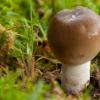
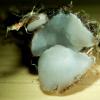
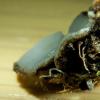
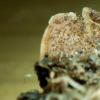

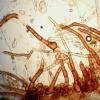
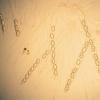
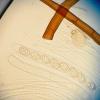
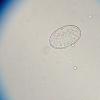
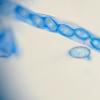
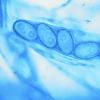
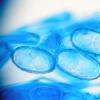
 Revised-key-RPKedit-2-0002.doc
Revised-key-RPKedit-2-0002.doc